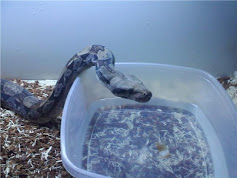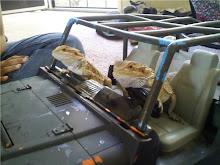Facts about Reptiles
Reptiles are found in every continent except Antarctica.
Reptiles have existed for more than 300 million years.
There are more than 8000 reptile species in the world.
Reptiles are lizards, snakes, turtles, and crocodiles as well as the lesser-known groups of tuataras and amphisbaenians.
Reptiles have scales or horny plates that cover their body.
You will often find reptiles lying in the sun on rocks and logs.
They can rarely breath underwater.
Reptiles are called cold-blooded because they can't regulate their own body temperature. Their body temperature is dependent on the external temperature.
Most reptiles lay eggs which have leathery shells that are resistant to drying.
As compared to mammals and birds, reptiles have neither fur nor feathers.
The extinct dinosaurs were reptiles.
Reptiles fertilize their eggs internally and don’t use water as a medium in which to lay eggs.
A majority of reptiles have a three-chambered heart.
Some reptiles produce live young.
In most reptile species, the young are independent from the moment they've hatched.
The longest snake is the reticulated python and the heaviest is the anaconda.Reptiles do not form a distinct evolutionary group as mammals and birds do. The Class Reptilia consists of four orders, which are very different from each other. For instance, lizards are more closely related to birds than to turtles. Crocodilia refer to crocodiles and alligators. The order Rhynchocephalia contains only two species known as tuataras, which are native to New Zealand. Squamata refers to lizards, snakes and other similar creatures. All turtle species are included in the Testudines order.
Komodo dragon is the largest living lizard.
In very hot or dry climates, some reptiles will estivate, or go into a torpor.
If a snake is born with two heads, its both heads fight each other for food.
They have waterproof skin.
A crocodile has an ability to grow new teeth to replace the old teeth.
An interesting fact is that a crocodile cannot stick out its tongue.
The Egyptians used crocodile dung as the first contraceptive in human history in 2000 B.C.
Some snakes such as anaconda and reticulated python can survive for months before eating.
The earth is inhabited by at least 250 species of turtles, 25 species of crocodilians, 5,500 species of snakes and 3,000 species of lizards.
Reptiles have more advanced circulatory, respiratory, excretory, and nervous systems than the amphibians.
The largest reptile is the saltwater crocodile, which grows up to 23 feet in length.
Some snakes are poisonous, or venomous. They have fangs, which bite into their prey and inject poison into it.
Once upon a time, snakes had legs and a new discovery has revealed that at least one had hips, too. The newly discovered snake species, Najash rionegrina, lived around 90 million years ago in Patagonia, Argentina.
Lorne Greene had one of his nipples bitten off by an alligator while he was hosting ‘Lorne Green’s Wild Kingdom’.
Many giant tortoises (Geochelone) have lived for 120 to 150 years.
Certain lizards, such as the chameleon, can change colors to blend into their environment. This camouflages them and gives them protection from the predators.
There are more venomous snakes than non-venomous snakes in the Australian continent.
The basilisk lizards can run across the surface of water without sinking.
Most snake species can dislocate their jaw, allowing them to swallow prey much larger than themselves.
Snakes don't have limbs. They move by slithering along the ground.
Most reptiles are carnivorous and eat insects, other reptiles, and small animals.
A few reptiles are herbivorous, eating plants.
Interestingly, turtles were present on earth before the dinosaurs.
Although reptiles breathe through lungs, certain reptiles can also absorb oxygen in water through membranes in their mouth.
Amazingly, the distance between an alligator’s eyes, in inches, is directly proportional to the length of the alligator in feet.
About Me
Boa.jpg)
- iReptiles
- This site is for educational purposes only, and to built a reptile community for all the reptile lovers out there. I also do reptile rescue, reptile sitting (short and long term), and reptile extraction, lol but it happens. I'm in San Diego, and if you need to give up your reptile, for whatever reason, give me a call at 619-971-6672, and my name is Cisko.
Wednesday, November 11, 2009
Subscribe to:
Post Comments (Atom)



No comments:
Post a Comment